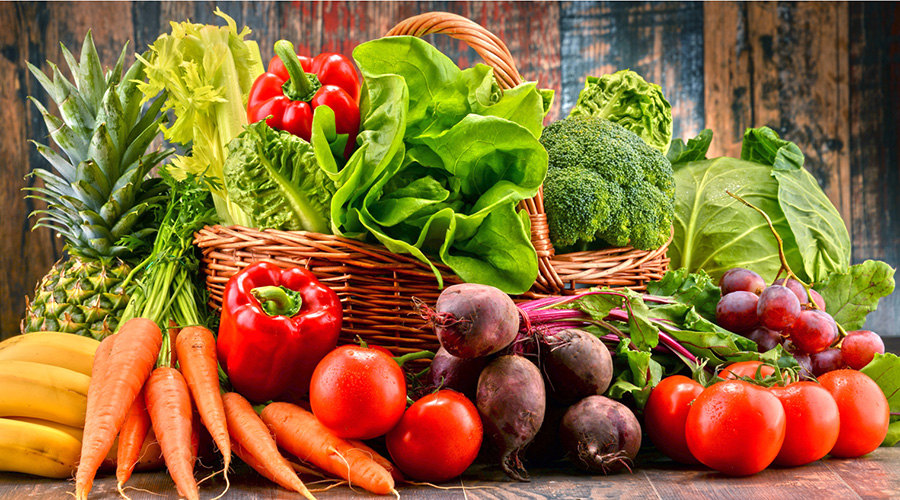

Health experts say that what you eat defines your health. Stroke is one of the deadliest illnesses and a cause of disabilities in both men and women. But the good news is, food can help lessen the rate of stroke, as scientists discovered.
A recent study indicates that the risk of suffering a certain type of stroke could be reduced through diet.
Dieudonne Bukaba, a nutritionist at Avega Clinic Remera, says that a stroke occurs when blood flow to part of the brain is blocked by a clot or a burst blood vessel. Without emergency care, a stroke can lead to severe brain damage or death.
He explains that several studies have looked at the influence of diet on stroke risk. Some have tied eating lots of fruits and vegetables to lowered risk; others have found no link at all.
Foods high in potassium, such as sweet and white potatoes, bananas, tomatoes, prunes, melon and soybeans, can help you maintain a healthy blood pressure, which is the leading risk factor of stroke. Magnesium-rich foods, such as spinach, are also linked to a lower risk of stroke, Bukaba says.
Recent studies suggest that eating more eggs could be linked to a higher risk of suffering a hemorrhagic stroke.
Bukaba further notes that the researchers found that citrus fruits, leafy vegetables, apples and pears were the specific types of greenery linked to reduced stroke risk.
"The effect of other types of fruit and vegetables on stroke risk are not confirmed yet. The effect could be indirect, and eating fruits and vegetables may benefit overall health by reducing blood pressure, cholesterol, weight and other stroke risk factors. It’s also possible that specific nutrients in the foods may reduce stroke risk,” he says.
To get a better understanding of the relationship between stroke risk and plants in the diet, the researchers searched for reports from recent decades that tracked the eating habits and health of men and women around the world.
According to studies led by Harvard researchers, greens turned out to be associated with the strongest protection against major chronic diseases, including a 20 per cent reduction of strokes (and heart disease) for every additional serving.
Studies find that for every seven grams of fibre you eat per day, you get nearly a seven per cent drop in the risk of first-time stroke.
Amon Rwasamanzi, a nutritionist at USAID-HINGA WEZE, NGO, says that on average, plant foods contain 64 times more antioxidants compared to animal foods. But you should always strive for a variety of fruits, veggies, herbs, and spices at every meal, so you can continuously flood your body with a wide range of antioxidants.
He says, higher magnesium intake is associated with a reduced risk of stroke. Beans, leafy greens, and whole grains are all loaded with magnesium.
However, Rwasamanzi urges focusing on whole foods, and limiting your intake of unhealthy items, for instance, processed or sugary foods and saturated or trans-fats.
He recommends eating high-fibre foods, such as fruits, legumes and vegetables, as it helps keep you full and satisfied.
Preventing stroke
Bukaba adds that high blood pressure is the biggest risk of stroke in both males and females. But it can be regulated. Through reducing the salt in your diet to no more than 1,500 milligrams a day (about a half teaspoon), evading high-cholesterol foods, like burgers, cheese, and ice cream, consume fruits and vegetables on a daily.
He adds that fish should be added two to three times a week, with several daily servings of whole grains and low-fat dairy. Quit smoking and if you drink alcohol, do so in moderation.
The risks
Bukaba also notes that you should reduce intake of the following; high cholesterol foods, salty foods and, cutting out dairy can help reduce your risk of stroke.
Being overweight could also be one of the risks leading to stroke, he notes.
Rwasamanzi explains that exercise is important — it is a remedy — and regular exercise can help you prevent stroke. In fact, researchers found that exercise works well for stroke.
Getting enough sleep, releasing excess weight, and staying positive works with the right diet, he adds.
He advises on choosing nutrient-rich dark green and orange vegetables, and regularly eating dried beans and peas.
Rwasamanzi says, choose low-fat or lean meats, poultry; and it is necessary to add beans, peas, nuts, seeds and fish sources. Though, most of your fat sources should be from fish, nuts and vegetable oils. Limit fat sources from butter.
"Go for a rainbow approach by choosing a collection of fruits, vegetables and legumes – dark reds, oranges, vibrant yellows, deep greens, blues and purples. Choosing a variety of colours enables you to take in a wide diversity of nutrients,” he says.
Bukaba is of the view that when it comes to shopping food, you should be vigilant by checking for food labels as this will save you a big deal on buying anything that is not healthy. Focus on the following information on the food label for each serving, when selecting foods for reducing your risk of stroke, for example, calories, total fat, saturated fat, trans-fat, cholesterol, sodium and dietary fibre.
"Although the body needs cholesterol to maintain the health of your body’s cells, too much cholesterol in your blood can escalate your risk of stroke and heart disease. High levels of blood cholesterol are the result of much cholesterol your body makes, how much fat and cholesterol is in the food you eat, and the kind of fat you eat,” he says.


